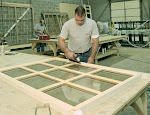Last month we were bidding a large, multi-year project in
Washington DC when our proposals started to come in for our subcontractor bids.
It isn’t uncommon to have a wide variance in bid price for various bid
packages, but this project had incredibly large swings in prices. This made me
think about why this phenomenon occurs during the bidding process, what it
means, and how to make the best sense of it. It is our goal in the construction
industry to select the lowest possible price for qualified bids that best meet
the scope of work, encompass the desired level of quality, and meet the
schedule. Unfortunately, wide variances during bid date can be a red flag that
one or more of these goals will not be met. How does one determine whether an
abnormally low price is real?
It isn’t uncommon to have price variations in the American
economy. Just run a simple Google search on a basic retail commodity you are
interested in purchasing and you will find prices that fluctuate by as much as
20%. In the city limits of Kansas City alone you will find gasoline prices
varying from $1.74 to $1.99. Purchasing the construction of an office building
or the restoration of a historic landmark, however, is slightly more
complicated than filling a tank of gas. When we get a low bid for a project, we
call on our internal Spanish Inquisition to determine the proposal’s validity.
A loose specification will open the door for lowball
pricing. If the construction documents fail to define materials, means, and
methods with precision, the opportunity for interpretation can create unhealthy
deviations. Failing to specify explicit materials by listed manufacturers,
including performance criteria, is critical. It is also important to have a
substitution process to be approved by the architect rather than allowing unapproved
equals. If we get a low bid on a scope of work, we will drill the bidder on all
of the details to be certain he has included all the important components. It
is often discovered during this interrogation that non-complying materials have
been submitted, or that the bidder missed quantities. We often uncover bidders
who disregard serious elements of a proposal because they didn’t spend the time
to review the specifications and assemble a meaningful bid. In some cases we
have found unscrupulous bidders attempting to manipulate the specification in
their quest for a low price.
Low prices are often a result of misinterpretation of the
desired level of quality for a project. Although the owner, design team, and
contractor have a clear understanding of the quality intent, subcontractors
might not invest in understanding the critical factors of their bid. After they
are awarded a contract, they might deviate in ways that can go unnoticed by the
construction team. For example, using different primers might result in paint
failure, changing sources for aggregate can alter masonry performance, and
abbreviating labor processes can adversely affect installations. There are
numerous examples of construction travesties out there that were a result of a
subcontractor substituting an inferior material such as an altered installation
clip. A thorough post-bid interrogation as well as ongoing quality control
checks and balances throughout the construction of the building can prevent
this from happening.
Finally, a low bid can be an indicator that the schedule
will be at risk. Low bidders often arrive at their price because they have
missed something. That something is often the project schedule. We include
scheduling as part of the post-bid interview. We ask in detail, how the
subcontractor intends to meet the schedule. We want to know the total labor
hours, broken down by month, and broken down further by individual dedicated to
the project. If it is a complicated discipline, we might ask for backgrounds of
the people dedicated to the job. We also want to know about other projects the
subcontractor will be working on at the same time to identify capacity
conflicts. If the subcontractor has weak answers to any of these questions, the
schedule will be in jeopardy.
The bidding process doesn’t need to be a game of Russian
roulette. I am amused by the cartoon of the astronauts on the space shuttle
talking prior to takeoff saying, “Do you realize we are about to take off in a
rocket that was built by the low bidder?” If you want your project to take off
and land smoothly, you might want to invest the time upfront asking the tough
questions before you get into bed with an unqualified subcontractor.





